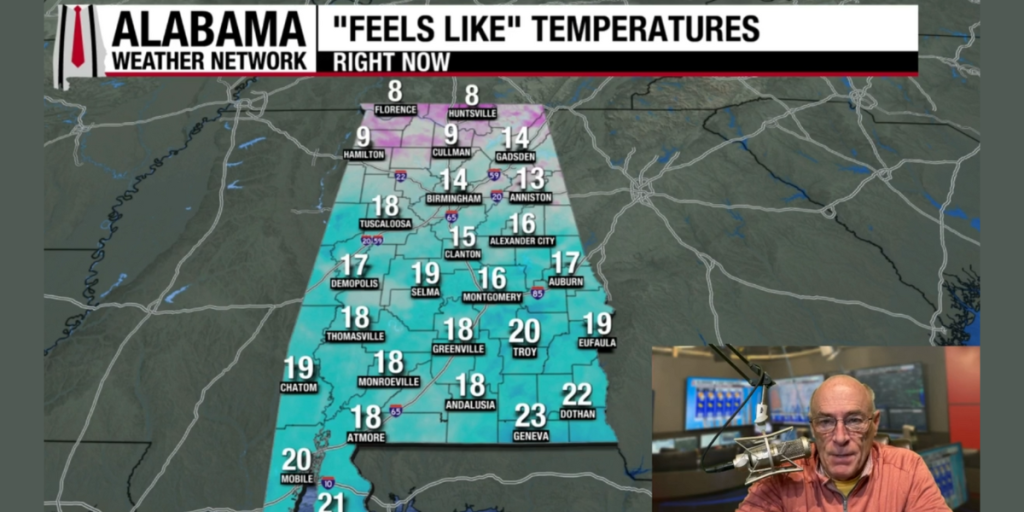Zero. Zip. Zilch.
That’s how much rain Terry Wyatt’s 500-acre cotton crop received in September.
“Cotton likes hot weather, but you have to have some rain,” said Wyatt, whose non-irrigated cropland in Harpersville was in the heart of Alabama’s most persistent drought based on the U.S. Drought Monitor. “We got in a pattern early. The heat index got extremely high at the end of May and stayed that way. We got intermittent showers in the summer and a 2-inch rain at the end of August. We didn’t have a drop the whole month of September.”
Record-breaking heat and minimal moisture meant some cotton struggled to grow. In cotton that did take root, underdeveloped and knotty bolls became an issue. Wyatt said he expects to harvest around 600 pounds per acre, 400 pounds less than 2018.
The Oct. 3 Drought Monitor report showed 3.54% of Alabama in extreme drought, 11.99% severe drought and 35.36% moderate drought. The remainder was abnormally dry.
Wyatt’s story shares a common thread among Alabama growers, said the Alabama Farmers Federation’s Carla Hornady.
“September and October are usually our driest months,” said Hornady, the Federation’s Cotton, Soybean and Wheat & Feed Grain divisions director. “Last year, farmers had a great growing season, but a wet harvest lowered yields. This year, yields will vary greatly. Some crops benefited from sporadic showers, but overwhelmingly, drought will lower yields again.”
In the Wiregrass, problems persisted for producers like Ed White. The Henry County farmer and Alabama Peanut Producers Association board member planted 900 acres of peanuts. Once prolonged heat and drought caused peanuts to separate from the shells, the clock was ticking to dig the legumes — which are packed in hard, parched earth.
“I can add about $15 an acre to production costs because of the added expense of using so many plow points (long blades that cut dirt from beneath peanuts),” said White, who changed plow points nearly every 5 acres. “But we can’t wait on a rain. The peanuts are finished growing, and we need to get them out of the ground as quickly as possible.”
White said his cotton fared better than peanuts, but the plants are shorter than normal.
“That can make picking cotton a challenge since machinery has to get so low to the ground,” said White.
In northeast Alabama, Clay Hastings and his father, Billy Gullatt, harvested soybeans in early October. Drought dealt a blow to the late-planted beans, Hastings said.
“We’re probably harvesting 50-60% of what we normally gather,” said Hastings, a Jackson County farmer who serves on the State Soybean Committee. “Our soybean yields this year are anywhere from 30-40 bushels per acre.”
They had a “decent corn crop,” but yields were below average, he said.
“Our corn average is usually about 175 bushels an acre, and it’s down to 150 or lower,” he said.
Hastings’ Scottsboro operation measured no precipitation in September. He said they plan to plant wheat following rain this fall.
While drought caused some farmers to delay planting winter vegetables, conditions urged cattle producers to take action.
On Whit Lovelady’s Talladega County farm, ponds dried up, and prime hayfields produced just half a bale an acre — a steep decline from the usual 3-bale average.
“I fed our first roll of hay the second week in July,” said Lovelady, who has 350 acres of hayfields in Alpine. “We caught a little rain shower or two, which spruced things up, and quit feeding. We started back the end of September.”
Feeding hay this early could cause a shortage this winter and affect farmers’ bottom line. Lovelady, who has 175 head of cattle, usually sells 400-500 rolls of hay. He said he will most likely keep all the hay for his own herd.
“I usually sell enough hay to help with feed costs, but I won’t be able to this year,” said Lovelady. “It won’t affect us right now, but it will in January or February when hay gets scarce.”
Drought conditions parched timber across the state, causing the Alabama Forestry Commission to issue a Fire Alert, urging delays in outdoor burning. Over 470 wildfires burned nearly 6,000 acres in September alone. That’s greater than the last three Septembers combined, including drought-ridden 2016.
Despite the challenges, farmers like White remain optimistic.
“This has been a bad year for us; there’s no question about it,” he said. “But it’s not the end of the world. Bad years will happen if you stay in farming long enough.”
For tips on managing drought, visit AlabamaDrought.com.
(Courtesy of the Alabama Farmers Federation)
Marlee Moore is Multimedia Content Director for the Alabama Farmers Federation.













